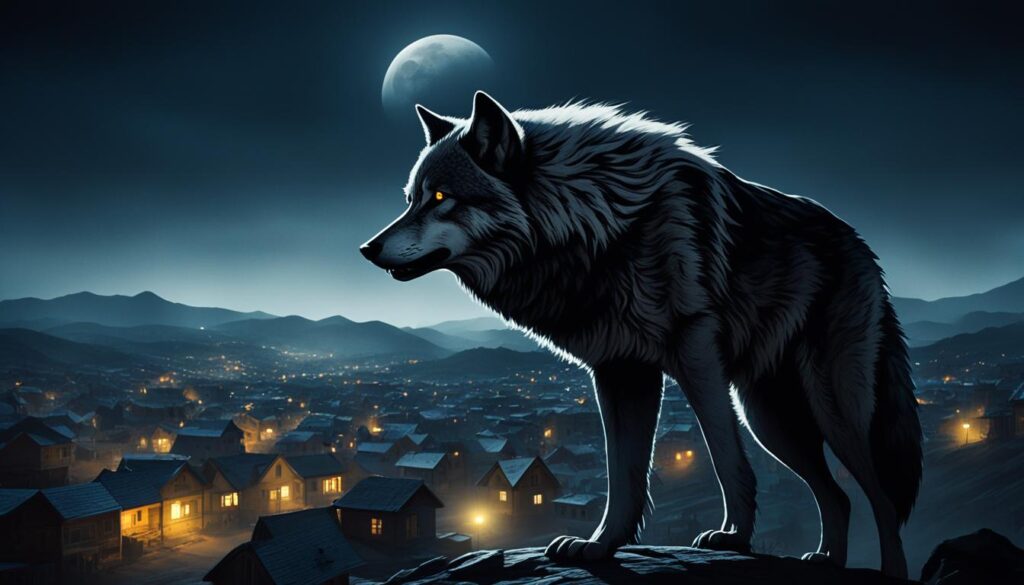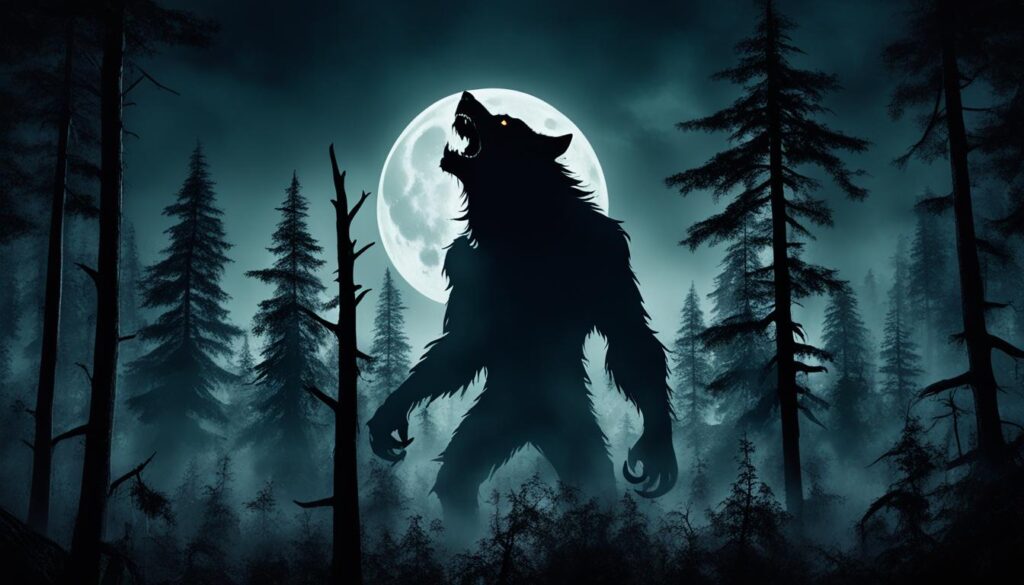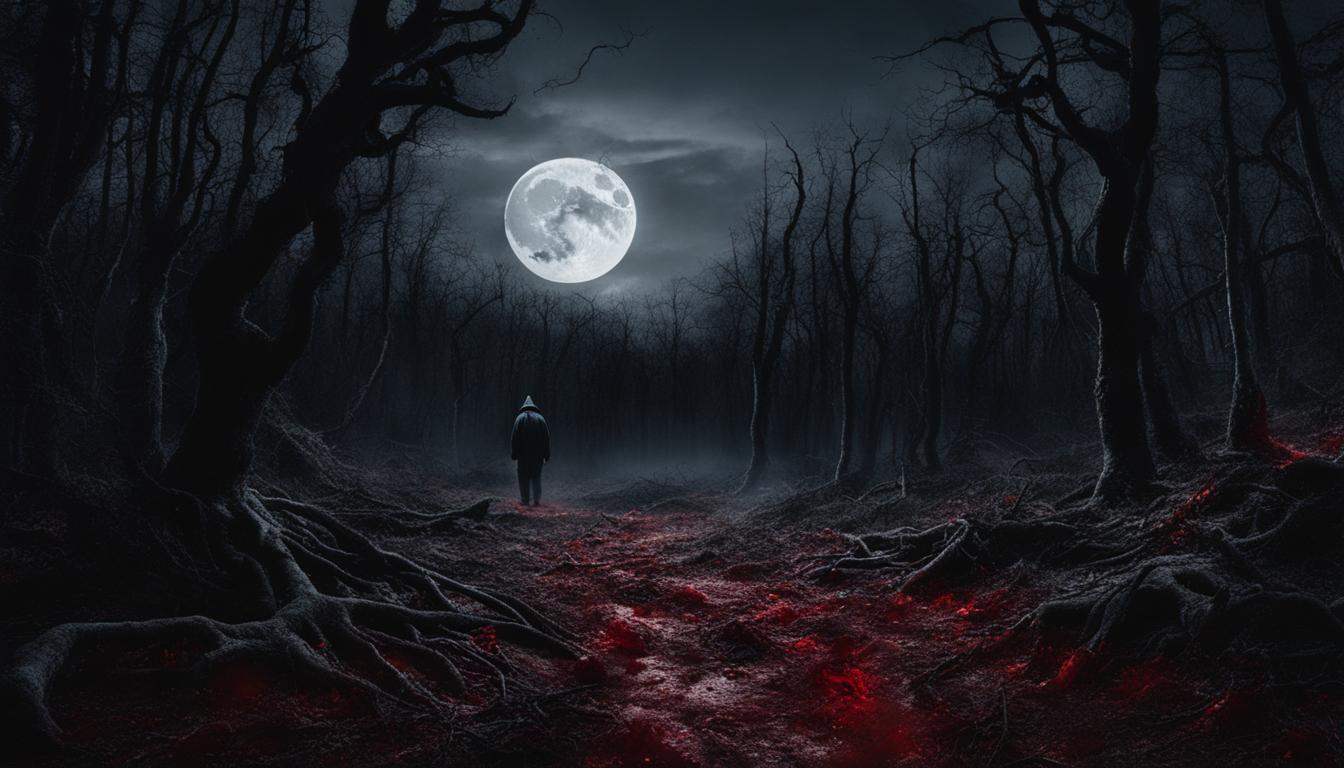If you’re a fan of horror fiction, then you surely know the name Stephen King. King has captivated readers for decades with his engaging, pulse-pounding stories that take readers on an unforgettable journey through the macabre. However, if you’re looking for something extra-chilling to sink your teeth into, then you can’t go wrong with Stephen King werewolf tales.
A master storyteller with a penchant for horror, King brilliantly weaves captivating werewolf narratives that are both thrilling and unshakeable. His unique take on these mythical creatures, often viewed as the stuff of nightmares, will leave you breathless and aching for more. Read on to discover why Stephen King werewolf tales are such thrilling reads.
Stephen King: Master of Horror Fiction
Stephen King is a household name, revered by readers worldwide as one of the greatest horror fiction writers of all time. With over 60 novels and numerous short stories to his credit, King has built an impressive body of work that has left readers on the edge of their seats for decades.
King has an incredible ability to create a haunting atmosphere and craft unforgettable characters that draw readers into his stories. He is known for his attention to detail, complex plots, and a knack for building suspense that keeps readers engaged from beginning to end. It’s no surprise that he is considered a master of horror fiction.
King’s talent has been recognized on many occasions, with countless awards and accolades under his belt. He has won multiple Bram Stoker awards, World Fantasy Awards, and British Fantasy Society Awards, to name a few. He has also been honored with the National Medal of Arts, the Edgar Allan Poe Award, and the prestigious O. Henry Award.
King’s Writing Style
King’s writing style is unique and often imitated but never replicated. He has a gift for weaving together intricate plots, suspenseful scenes, and frightening scenarios that leave readers on the edge of their seats. He incorporates elements of horror, science fiction, and fantasy to create complex stories that often delve into the darkest aspects of human nature.
One of King’s hallmarks as a writer is his ability to create characters that are incredibly relatable, even in the most terrifying of situations. Whether it’s a young boy with psychic abilities or a small-town sheriff fighting for his life, King’s characters feel like real people, making their struggles all the more poignant and the horrors they face all the more potent.
The Impact of King’s Work
King’s work has had an enormous impact on the world of literature, inspiring countless authors in the horror genre and beyond. Many of his works have been adapted into movies and TV shows, further cementing his legacy as a master of storytelling.
Beyond the world of literature and film, King’s influence can be felt in popular culture, with references to his work appearing in everything from music to video games. His impact on the horror genre cannot be overstated, and his legacy as a master of horror fiction is secure.
The Origin of Werewolves in Mythology and Literature
The werewolf has long been a fixture in mythology and literature, with tales of these mythic creatures dating back to the ancient Greeks and Romans. In many cultures, werewolves were seen as powerful symbols of both the human and animal worlds, representing the duality of nature and the human psyche.
In Nordic mythology, for example, the wolf was revered as a powerful and fearsome animal, while the human was seen as a symbol of intelligence and strength. Werewolves, therefore, embodied both of these qualities, making them simultaneously feared and respected.
In literature, werewolves have been a popular subject since the Gothic era. Classic horror stories such as Mary Shelley’s “Frankenstein” and Bram Stoker’s “Dracula” featured werewolves as mysterious and terrifying creatures, highlighting their supernatural abilities and animalistic traits.
Stephen King draws inspiration from this rich history of werewolf lore to create his own unique and terrifying tales. By incorporating elements of werewolf mythology from a variety of cultures and time periods, King imbues his stories with a sense of depth and historical context.
Werewolf Lore in Different Cultures
To appreciate the breadth of werewolf mythology across cultures, it can be helpful to evaluate a table showcasing some of the key differences. Here is a brief overview of werewolf mythology in different cultures:
| Culture | Beliefs and Characteristics |
|---|---|
| Greek | Werewolves were thought to be the result of a curse or magical spell that transformed humans into wolves. They were often associated with the god Apollo and the goddess Artemis, who were both associated with the moon. |
| Roman | Like their Greek counterparts, Roman werewolves were believed to be created by a curse or magic. They were associated with the god Faunus, who was the god of the forest and fertility. |
| Germanic | In Germanic folklore, werewolves were often associated with witches or sorcerers. They were thought to possess the power to transform into wolves or other animals to perform evil acts. |
| Native American | Werewolves were considered sacred in some Native American cultures, representing a connection to the animal kingdom and the spirit world. They were believed to be shapeshifters who could transform into wolves or other animals. |
As shown in the table, werewolf mythology takes on different forms depending on cultural beliefs and practices. King incorporates these various interpretations of werewolves into his own stories, creating complex and multifaceted characters that explore the depths of the human psyche.
Now that we have explored the rich history of werewolf mythology, we can begin to understand how King masterfully weaves these narratives into his own unique werewolf tales.
“Cycle of the Werewolf”: King’s First Werewolf Tale
Stephen King’s “Cycle of the Werewolf” marked the beginning of his fascination with werewolf tales. First published in 1983, this novella is King’s first-ever werewolf story, and it’s a gripping read from start to finish. The story is richly atmospheric, transporting readers to a small town in Maine, where strange events begin to occur.
The book’s structure is unique and innovative, with each chapter representing a month of the year in the cycle of the werewolf. The narrative follows a series of brutal murders that happen during these full moons, and as the killings escalate, the townspeople become increasingly terrified.
King creates a chilling atmosphere with his vivid descriptions and attention to detail, evoking a sense of dread that lingers throughout the story. The characters are well-drawn, and the tension continues to mount as the story progresses.

Overall, “Cycle of the Werewolf” is a thrilling read that showcases King’s talent for horror and suspense. It’s a must-read for fans of the werewolf genre and for anyone looking for a spine-tingling tale that will keep them on the edge of their seat.
“Silver Bullet”: A Werewolf Thriller on the Big Screen
Stephen King’s “Cycle of the Werewolf” was adapted into the thrilling film “Silver Bullet” in 1985. Directed by Daniel Attias and starring Gary Busey and Corey Haim, the movie follows a paraplegic boy named Marty who discovers the small town he lives in is terrorized by a werewolf.
The film follows the original storyline closely, capturing the essence of King’s werewolf tale. The suspenseful atmosphere and thrilling visuals make “Silver Bullet” a must-watch for horror fans and King enthusiasts alike.
The movie had a significant impact on the werewolf genre, influencing subsequent films and TV shows. It also showcases King’s ability to translate his written works into captivating visual experiences.
Werewolf Themes in King’s Novels and Short Stories
Stephen King is known for incorporating werewolf themes into many of his works. From subtle references to full-fledged werewolf characters, lycanthropy is a recurring motif in King’s broader body of work. Let’s take a closer look at some of the werewolf themes present in King’s novels and short stories.
The Importance of Transformation
One of the key werewolf themes explored in many of King’s works is the transformation process. Whether seen as a curse or a blessing, the metamorphosis from human to werewolf is often depicted as an important moment of change, both physically and emotionally. Through his storytelling, King is able to convey the significance of this transformation, and how it can impact not just the individual experiencing it, but also those around them.
The Struggle Between Man and Beast
Another prominent werewolf theme in King’s writing is the internal struggle between man and beast. This conflict is often used to explore complex psychological themes, such as the dual nature of humanity and the struggle between good and evil. By using werewolves as a metaphor for this internal struggle, King is able to create powerful narratives that leave a lasting impression on readers.
The Burden of the Curse
In many of King’s werewolf stories, the curse of lycanthropy is depicted as a burden that characters must bear. This burden often comes with a sense of isolation and alienation, as those afflicted with the curse must navigate a world that is often hostile to their true nature. Through his exploration of this theme, King is able to draw attention to the challenges faced by those who feel like outsiders in society.
Werewolf Themes in King’s Novels and Short Stories
| Novel/Short Story | Werewolf Theme |
|---|---|
| Wolf Moon | The struggle between man and beast |
| Skeleton Crew | The importance of transformation |
| The Talisman | The burden of the curse |
| The Dark Tower Series | The struggle between man and beast |
As the table above indicates, werewolf themes can be found throughout King’s body of work, from his short story collection “Skeleton Crew” to his epic “Dark Tower” series. By weaving these themes into his storytelling, King is able to create rich, nuanced narratives that engage readers on multiple levels.
“The Talisman”: King’s Collaborative Werewolf Tale
In 1984, Stephen King collaborated with author Peter Straub to write “The Talisman,” a captivating fantasy novel that features a unique twist on the werewolf myth. The story follows a young boy, Jack Sawyer, as he travels through two parallel universes, one of which is filled with magical creatures, including werewolves.
The werewolves in “The Talisman” are not your typical blood-thirsty monsters; they possess complex personalities and motives that will keep readers on the edge of their seats. King and Straub’s collaborative effort brings a fresh perspective to the werewolf tale, straying away from cliches and predictable plots.
King’s knack for creating a suspenseful atmosphere shines through in “The Talisman,” as readers will be taken on a thrilling ride alongside Sawyer. The werewolf element in this gripping novel adds an exciting layer to the story, making it a must-read for fans of King’s horror and fantasy works.
The Talisman: Key Features
| Features | Description |
|---|---|
| Collaborative effort | A unique collaboration between two renowned authors |
| Fantasy and horror genre | Combines elements of the fantasy and horror genres, providing a unique reading experience |
| Parallel universes | Explores the concept of parallel universes and their interconnectedness |
| Werewolf characters | Features complex werewolf characters with unique personalities and motives |
King’s Influence on the Werewolf Genre
Stephen King’s contribution to the werewolf genre goes beyond his chilling tales of lycanthropy. His innovative storytelling techniques and character development have significantly influenced subsequent werewolf tales by other authors.
King’s ability to create complex characters with relatable human struggles and flaws is particularly evident in his werewolf stories. He portrays the dichotomy between the human and animal sides of his werewolf characters with great psychological depth, bringing forth thought-provoking themes such as identity and the struggle between man and beast.
Moreover, King’s attention to detail and his masterful execution of plot and atmosphere have set a precedent for werewolf fiction. Many authors have drawn inspiration from his works to create their own unique werewolf stories.
It is no wonder that the werewolf genre owes so much to Stephen King’s influence. His ability to terrify and captivate readers with his werewolf tales is a testament to his unmatched creativity and skill as a storyteller.
The Psychological Depth of King’s Werewolf Stories
Stephen King is known for his ability to create horror stories that go beyond the surface level. His werewolf tales are no exception, delving into themes of identity, the human psyche, and the struggle between man and beast.
One of the most prominent examples of this psychological depth can be seen in King’s novel The Wolfen. The book explores the concept of a werewolf-like creature from the perspective of the creature itself. King delves into the psychology of the creature, examining its motivations, desires, and fears. This unique perspective adds a layer of depth to the werewolf myth that is rarely explored in other works of fiction.
Another compelling example of King’s psychological exploration in werewolf stories can be found in his novella The Cycle of the Werewolf. In this work, King explores the struggle between man and beast within protagonist Marty Coslaw, who is bitten by a werewolf and begins to experience physical transformations. Through Coslaw’s journey, King examines the dark side of human nature, demonstrating how even the most ordinary person can be driven to violence and savagery under certain circumstances.
Overall, King’s werewolf tales offer readers much more than just cheap thrills and scares. By delving into the psychological depths of his characters, he creates stories that are thought-provoking, emotionally resonant, and, above all, unforgettable.
Popular Stephen King Werewolf Tales to Read
Stephen King’s werewolf tales have enthralled readers for decades. Here are some of the most popular werewolf tales by the master of horror:
| Werewolf Tale | Publication Year | Description |
|---|---|---|
| The Wolf Gift | 2012 | An updated take on the werewolf mythos, following a young woman who is bitten and discovers newfound abilities as a result. |
| The Dark Tower V: Wolves of the Calla | 2003 | A dark fantasy novel in which werewolves play a pivotal role in the story’s overarching plot. |
| Night Shift: The Mangler | 1978 | A short story in which a laundry folding machine mysteriously turns into a killing machine operated by a man who is revealed to be a werewolf. |
| Full Moon Fever | 1989 | A novella about a private detective investigating a series of animalistic murders that he believes are the work of a werewolf. |
King’s werewolf tales are sure to keep you on the edge of your seat and leave your heart racing. Choose one of these popular reads and get ready to be transported into a world of terror and suspense.

Conclusion
In conclusion, Stephen King’s werewolf tales are not just simple horror stories, but masterfully crafted narratives that showcase his prowess in the art of storytelling. King’s works have enthralled readers worldwide, and his ability to create a sense of terror and suspense is unrivaled. His werewolf tales are testament to that, offering readers a thrilling and immersive reading experience that is hard to put down.
If you are a fan of horror fiction, Stephen King’s werewolf tales should definitely be on your reading list. From “Cycle of the Werewolf” to “The Talisman,” his werewolf stories explore the deeper aspects of human nature, identity, and the struggle between man and beast.
King’s influence on the werewolf genre is undeniable, and his works have inspired countless authors to explore the world of lycanthropy further. So, whether you are a lifelong fan or new to the genre, Stephen King’s werewolf tales are sure to leave you on the edge of your seat.



